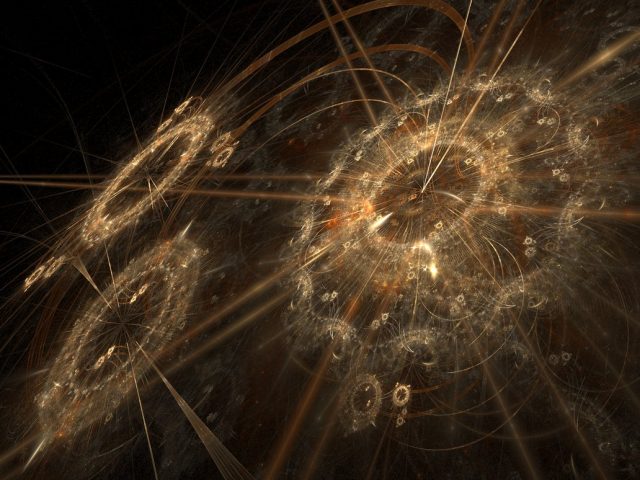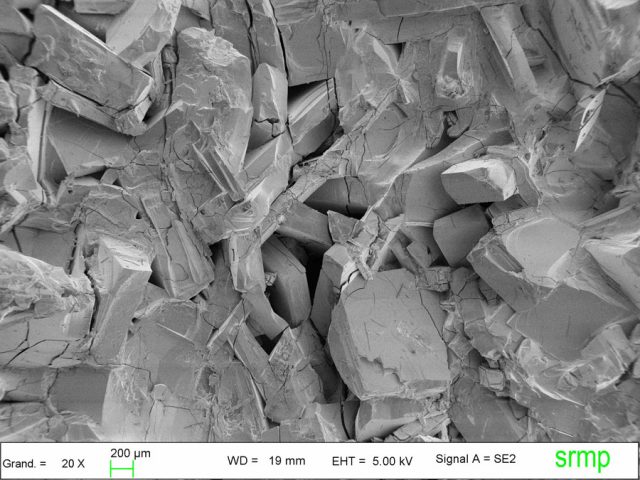The link between superconductivity and black holes

Superconductors are a particularly strange kind of metal. What makes them different is their behavior at very low temperatures – extremely low, that is, close to absolute zero. Basic thermodynamics dictates that in this regime we should expect all motion to cease, the constituents of the material being frozen at fixed positions. And with no motion of charges, there should also be no electric current, and no conductivity. However, in a superconductor at these temperatures, the laws of the quantum world take over and the electrons of the metal flow frictionless and simultaneously, resulting in an enormously efficient conductivity1.
This phenomenon was discovered in the early part of the XX century, and its understanding defied physicists for a very long time. What is today known as the conventional description of superconductors dates from the 1950’s: The BCS theory 2, according to which the electrons are bonded together into pairs by phonons. However, in recent years a new class of superconductor has surfaced, challenging any such quantum mechanical description. Their surprising properties are well-known thanks to experimental results, but so far only one kind of theoretical construction has been able to reproduce them. What is most shocking about it is that it involves black holes in higher dimensional spacetimes 3.
In order to understand why, in the first place we need to consider that whenever we think of physical systems such as these materials, chances are we will picture them in terms of point-like objects (particles) or propagating waves. And indeed, usually this picture is an approximately correct representation of the blocks that compose physical reality. But when materials are subject to extreme conditions (for instance, extremely low temperatures), the picture needs to change because the fundamental blocks are not those anymore.
The fact of the matter is that experiments suggest that the particles of a superconductor under these conditions interact so much with one another that they lose their individuality. Their quantum oscillations overlap so much that they behave like a swarm. They become one, much like birds in a flock do when they are migrating. The problem is that the mathematical tools we have at our disposal to deal with the physics of quantum fields are based on individuality. Their starting point is to take one particle at a time, and for this reason matter that interacts very strongly may behave in rather unexpected ways. To try and apply our traditional methods is like trying to describe oceanic currents in terms of the interactions among water molecules. The appropriate tool would be one that averages over these many quantum interactions, providing a macroscopic description.
A particularly interesting observation is that if an electron is thrown into such a strongly coupled system, it disappears immediately, in a similar way to what happens to an object which falls into a black hole. It may seem like a far-fetched analogy, unless we remind ourselves that beyond Einstein’s General Relativity lies the mysterious and unknown theory of quantum gravity. Nowadays, it is believed that black holes are quantum objects and that the Einstein-based classical picture of them is an average over microscopic quantum variations. Because of this, in the classical picture, information about what falls in seems to be lost forever. Thus, these systems seem to be at opposite sides of the spectrum: for a superconductor, we cannot get past the microscopic (weakly coupled) picture, whereas in gravity we cannot get out of the macroscopic description.
The simplistic analogy sketched above is actually part of a very large construction: the holographic duality 4, a spin-off from the string theory, whose greatest achievement was to make manifest that higher dimensions (a requirement for the mathematical consistency of string theories) need not be taken literally. Rather, they may encode the energy scale and internal symmetries of the lower-dimensional theory.
The basic statement of the conjecture is that our familiar descriptions in terms of quantum fields (without gravity), such as the ones describing the interactions of the electrons in the superconductor, are equivalent to some quantum gravitational theory in an exotic higher dimensional spacetime. The correspondence behind this is such that the limit of strong interactions of the field theory maps to the classical limit of the gravitational theory, that is, to General Relativity; and, for reasons that are beyond the scope of this article, a system at a fixed temperature corresponds to a spacetime that includes a black hole. A priori, it may seem that black hole physics must surely be more complicated to study than any superconducting material, however, as stated above, we just lack mathematical tools to describe quantum mechanical collective effects. Whereas decades of purely theoretical research have left us with the appropriate mathematical tools to describe black holes, which now come in handy.
In the end, the main scientific support for the study of black hole equivalents of superconductors comes from the tremendous success of their results, even those derived from the simplest of models (see e.g. 5678 for reviews). A particularly interesting material are the cuprates, compounds of copper and oxygen, which display superconductivity at relatively large temperatures, in response to an alternating current. The interest lies in the fact that these temperatures are more easily accessible technologically than those of conventional superconductors.

Thus, understanding the physics of superconductors could have important technological applications. It would be useful to implement them to, for instance, build very high-power electrical cables or spaceship propulsion engines. They could also give way to entirely new technologies, such as magnetic levitation. This is currently beyond our scope because the production of cuprates is too expensive, but if we could learn to play with their properties, perhaps these technologies would become viable from the engineering point of view.
But this is not just about applications. These studies have the potential of testing and moving forward one of the Universe’s most mysterious conjectures, which reminds us of one of the greatest theoretical developments of physics in the past century: back in those days, the wave-particle duality was a huge surprise. Today, however, we have learned to accept that light can behave both as composed of point-like objects (photons) and as an electromagnetic wave. Two descriptions that could have seem very different turned out to be related.
Often in physics, it is all about looking for the basic components. And it could happen that there is not just one way to do it: in some cases, these components are particles such as the electrons, and in others, they may be gravitational fields in a higher dimension. For decades, the wave-particle duality was subject to debate. The validity of the holographic duality is the analogous debate of our time. If it turns out to be correct, perhaps this will not be about accepting extradimensional physics as an alternative way of conceiving certain phenomena, but as one of the fundamental pillars Nature’s laws are constructed upon.
References
- H. K. Onnes, “The resistance of pure mercury at helium temperatures”. Commun. Phys. Lab. Univ. Leiden 12: 120 (1911). ↩
- J. Bardeen, L. N. Cooper and J. R. Schrieer, “Theory Of Superconductivity”.Phys. Rev. 108, 1175 (1957). ↩
- S. A. Hartnoll, C. P. Herzog and G. T. Horowitz, “Building a Holographic Superconductor”. Phys. Rev. Lett. 101, 031601 (2008). ↩
- J. M. Maldacena, “The large N limit of superconformal field theories and supergravity”. Adv. Theor. Math. Phys. 2, 231 (1998). ↩
- C. P. Herzog, “Lectures on Holographic Superfluidity and Superconductivity”. J. Phys. A 42, 343001 (2009). ↩
- G. T. Horowitz, “Introduction to Holographic Superconductors”. Lect. Notes Phys. 828, 313 (2011). ↩
- N. Iqbal, H. Liu and M. Mezei, “Lectures on holographic non-Fermi liquids and quantum phase transitions”. Preprint: http://arxiv.org/abs/1110.3814 ↩
- D. Musso, “Introductory notes on holographic superconductors”. Preprint: http://arxiv.org/abs/1401.1504 ↩
1 comment
Wait so are all superconductors metals
i was under the assumption that they werent